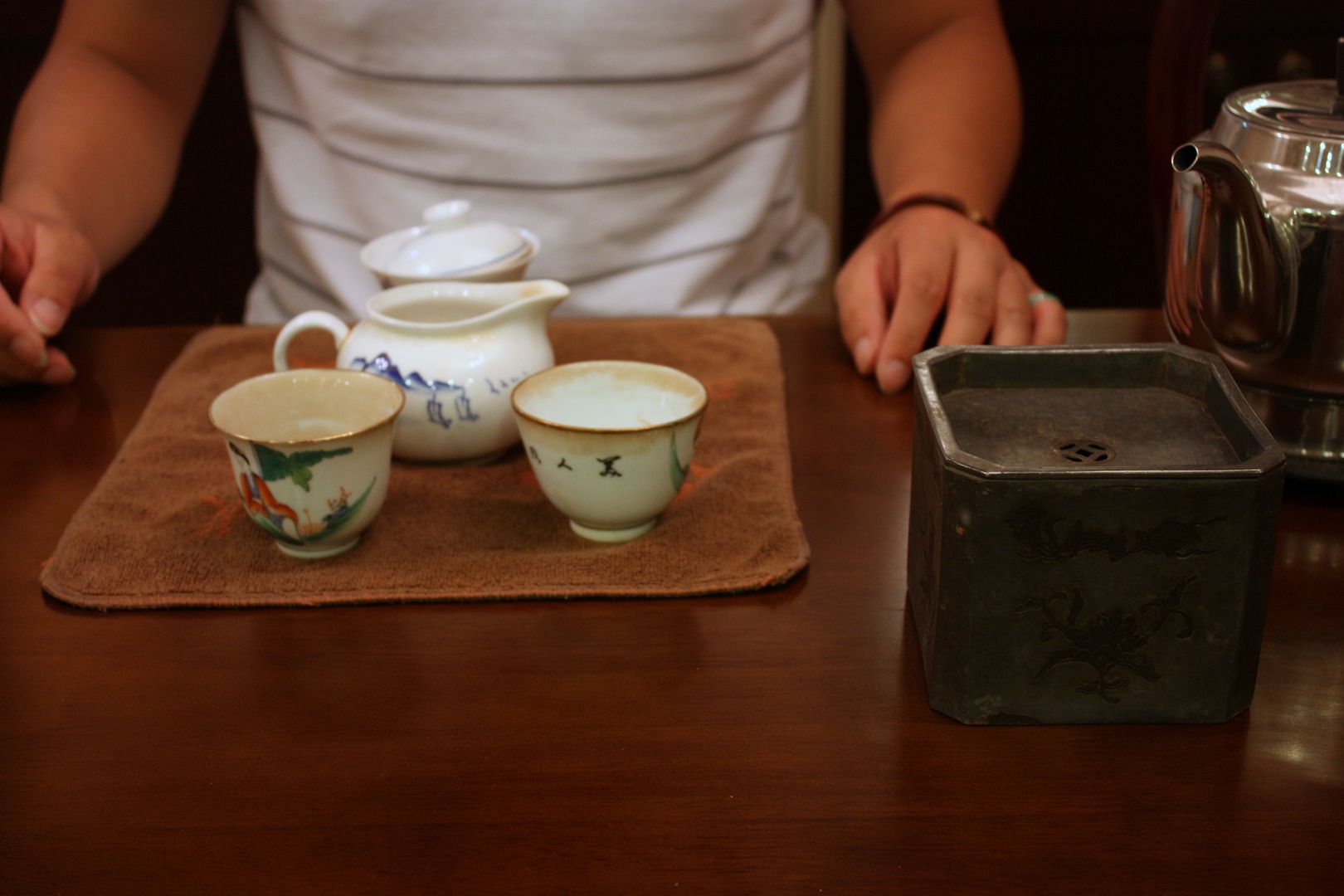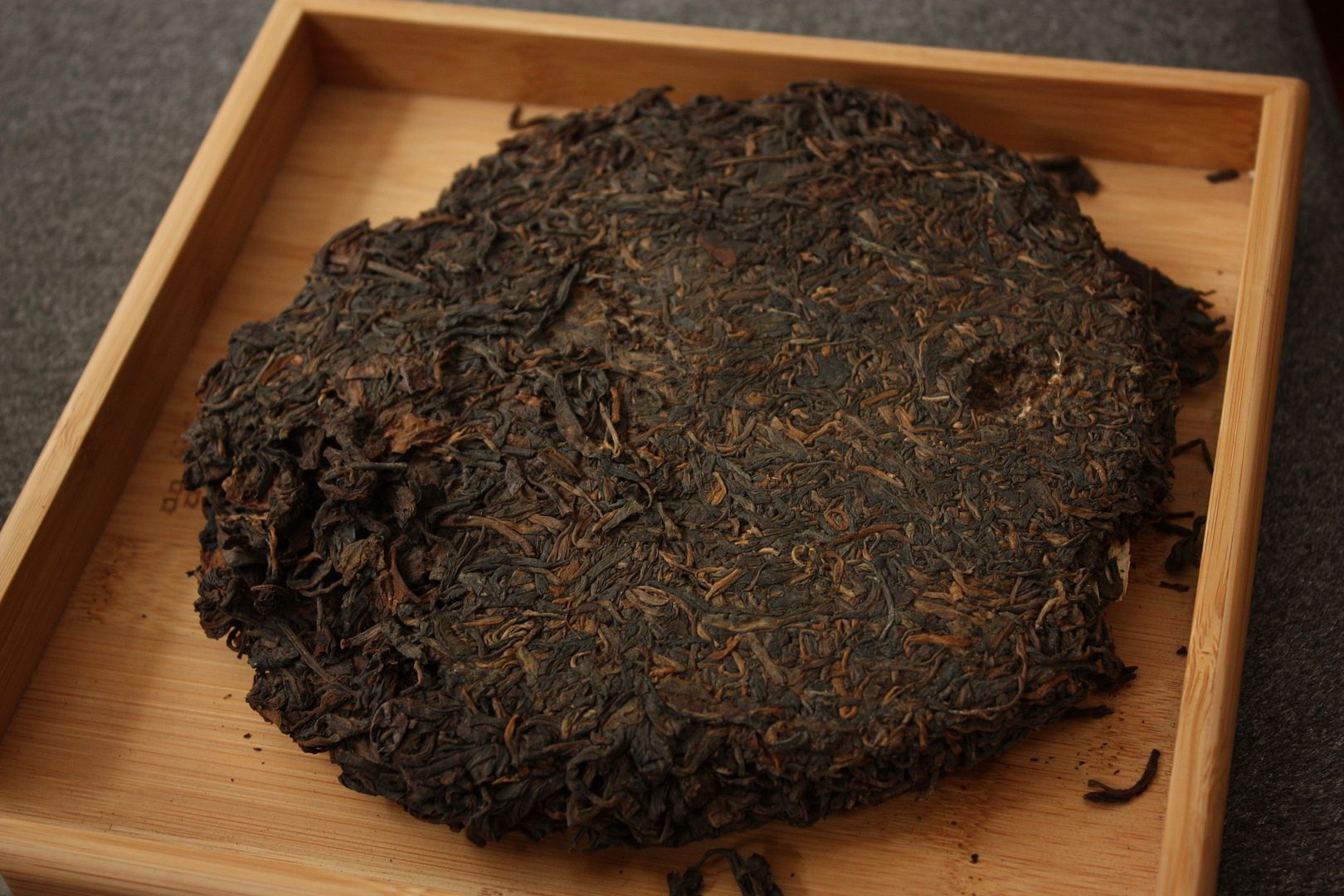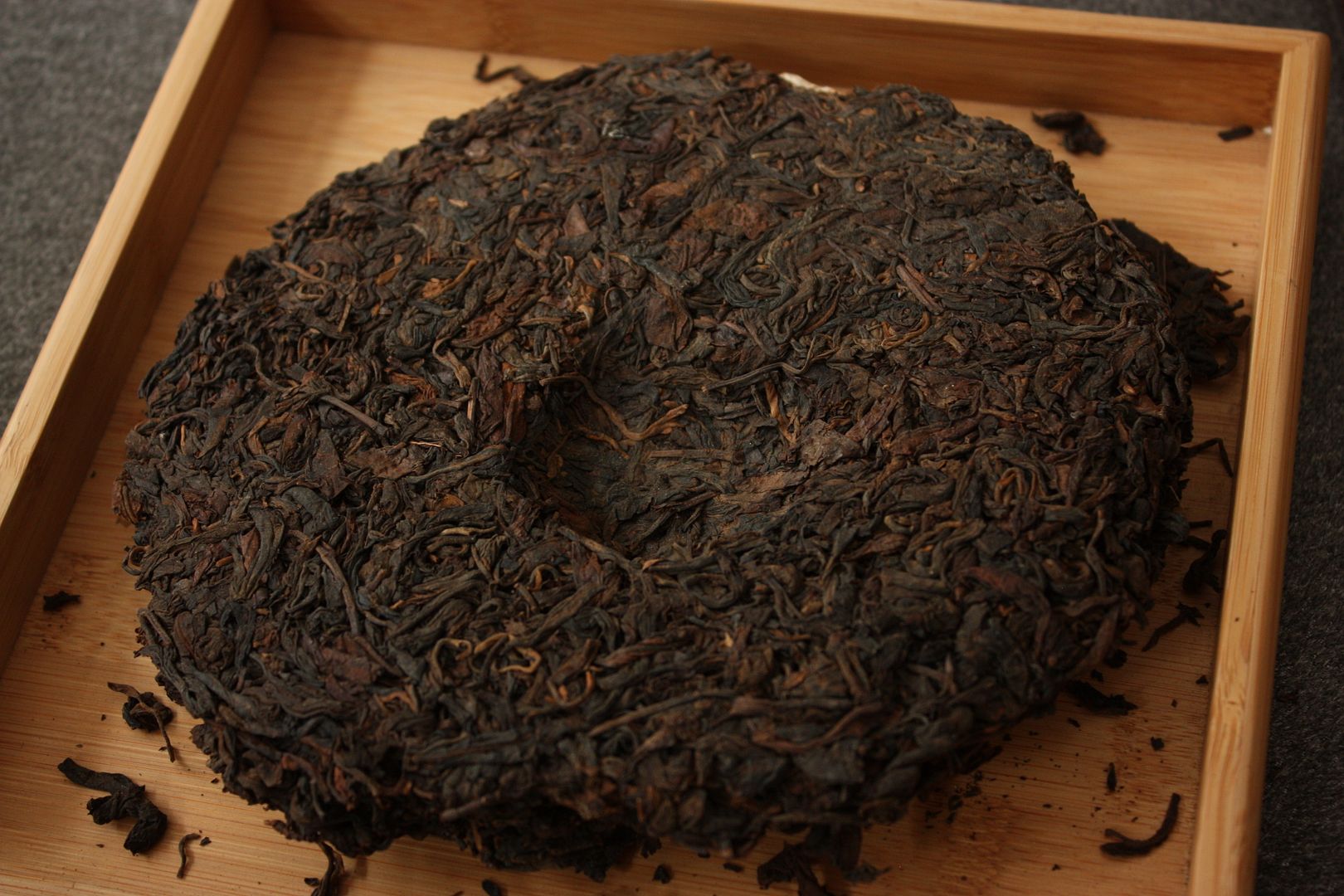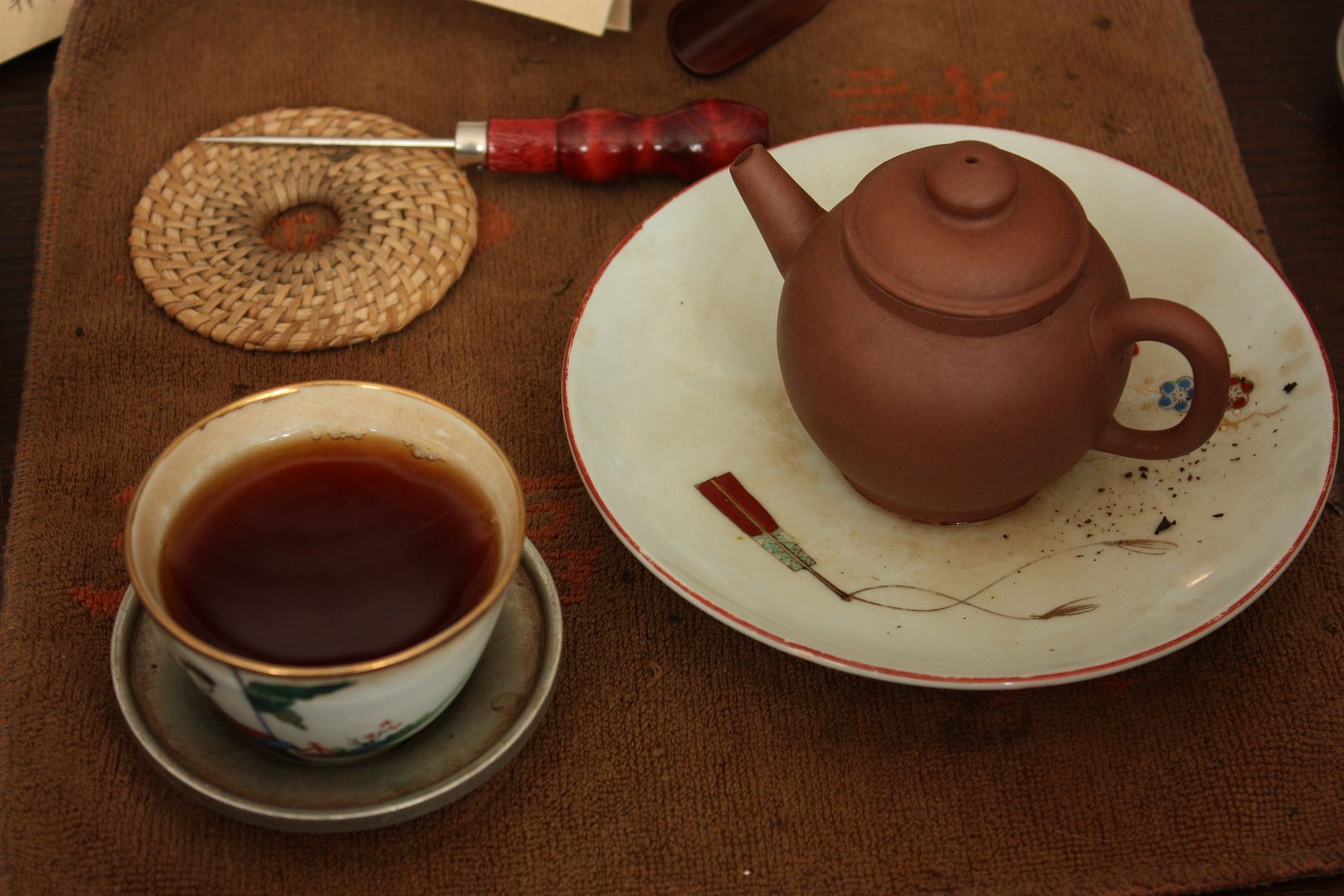One of the most profound changes in the drinking of teas in Southern China in the past few decades has been the gradual shift from darker, heavier roasted oolongs to lighter, more floral and less roasted teas. The former can be anything from completely carbonized, black as charcoal teas to ones that are more orange than brown. The range of colours of roasted teas can be seen in this post of mine from a little while back, when I tried three different teas with varying levels of roasting and blending. These are not representative, but at least give you a sense of what can be out there.
Such roasted teas, however, are increasingly hard to find, at least ones that are done well. Farmers and vendors in mainland China tend not to carry any such teas, and when they do, they are either very expensive and sold as specialty items, or very bad, or both. Instead, most of the time you find oolongs that are completely unroasted, that are somewhere between lime green and nuclear green in colour, either dry or brewed, and which are extremely fragrant. Some are so “fresh” they need to be kept in fridges, which makes you wonder what people used to do before fridges were possible.
Now, all of this is partly because of newer technology, new ability to process teas, and the shifting of tastes that make these light, floral oolongs so popular. The advent of vacuum packing for teas means that even teas with high moisture content can be kept fresh for far longer than possible in the old days, so roasting becomes less necessary. The teas themselves also went through changes, with the leaves being rolled much more tightly than before due to the use of machines rather than hand, and stems now tend to be kept with the leaves (as you always see on gaoshan oolong) rather than clipped off the way they used to. All these changes are a result of technological innovations that took place since the 1970s, and allowed for the change in consumption pattern and preferences among the tea drinking public to take place.
Of course, the people drinking the tea also changed this as well – it is much more attractive, for example, to drink a tea that is extremely fragrant. A fresh tasting oolong, whether it is gaoshan oolong from Taiwan or a spring pick tieguanyin from Fujian, tend to be very up front and immediate these days. They assault your senses, especially the nose, and they are very approachable. The fragrance lures people in, and is very popular with those who don’t drink tea very seriously. They are also easier to create – you can basically skip all the steps of roasting and re-roasting, which also means less cost for the farmer. Less work for more money? Sounds like a great deal.
Consequently, the number of places that do proper roasted teas are slowly dwindling, and places that still use charcoal to roast are even less common. Some of that is due to cost and regulations – in Hong Kong, for example, it is pretty much impossible to charcoal roast anymore, because of both fire-code restrictions and also the cost of land and labour. In Taiwan such practices are still possible, whether in weird oven arrangements like I blogged about a few days ago, or oftentimes done in farmhouses up in the hills. However, in general, it’s hard, backbreaking work. In the summer the heat itself will kill you. The few places that still do roasting in Hong Kong tend to use electric roasting techniques, which carry a slightly different fragrance and can taste a little metallic. For the most part though, such skills are dying.
At the same time, recently there’s been a little bit of a revival in the taste of the consumers, with roasted teas seeing a little more press time and also interest than before. One of the things with the super-green type of oolong is that over the long run, they can be very harsh to drink. They are also, relatively speaking, rather boring – once you get past the first few infusions, the tea generally doesn’t hold much interest, and for those who are into tea, such single-dimensional taste can be quite boring. Roasted teas, on the other hand, can be much more soothing to drink and tend to have longer-lasting tastes. They are not quite an acquired taste like puerh, but are certainly less immediately alluring than floral oolongs. At the same time, they do tend to attract those who have spent some time with tea.
One of the shops that I frequent in Hong Kong had some interview done recently in a local food and drink magazine, and since then, he said that business has picked up considerably. In the article, they talked about how roasted teas is their traditional method of making the teas, and that before the roasting is done it is not really considered a “finished product”. I can personally see this pickup in business, as more people come by buying tea that obviously look like they are coming for the first time. Even expats, who used to only buy things like jasmine and light, floral oolongs, are now opting for the darker stuff. The issue is that aside from some places, many such roasted teas are quite inferior in quality. Some cater to a very specific taste that might turn people off to this genre entirely, such as the pitch-black, carbonized shuixians that are mainly sold to Southeast Asia. There is, however, a balance between the two ends, and I think perhaps slowly but surely, the pendulum might swing back just enough so that the roasted teas once again see some popularity among the drinkers. After all, if there’s a market demand for this stuff, then there will be those who make them. I recently tried a somewhat roasted baozhong that is out of this world, but the price of such teas are also quite astounding. I suppose if the market will bear it, there will be those who will be willing to put in the work and effort to make such teas. Let’s hope it doesn’t disappear entirely, because the technique of roasting teas properly for drinking goes very far back in tea consumption history. Its loss will be a great one for all tea aficionados.





 RSS - Posts
RSS - Posts
Interesting.... would 250C in my oven work?